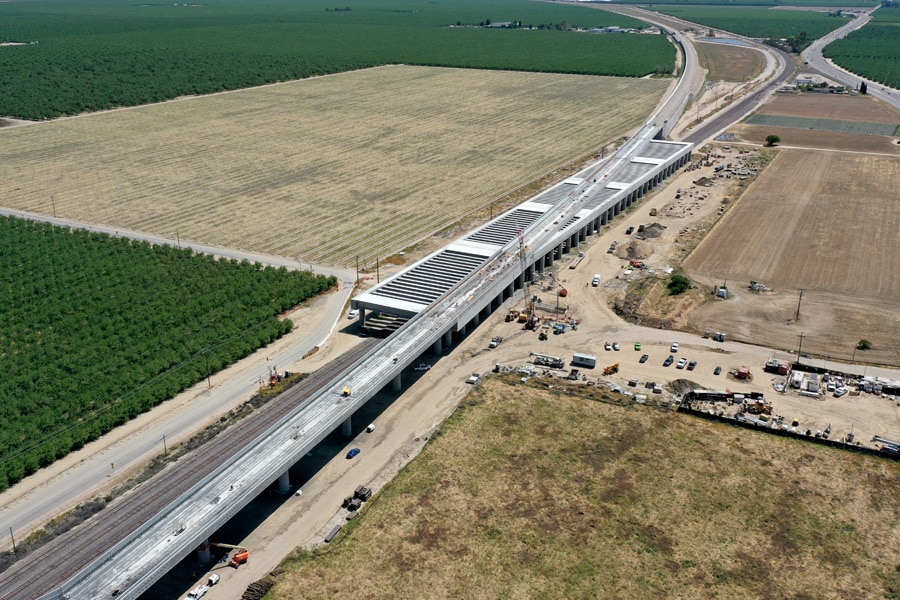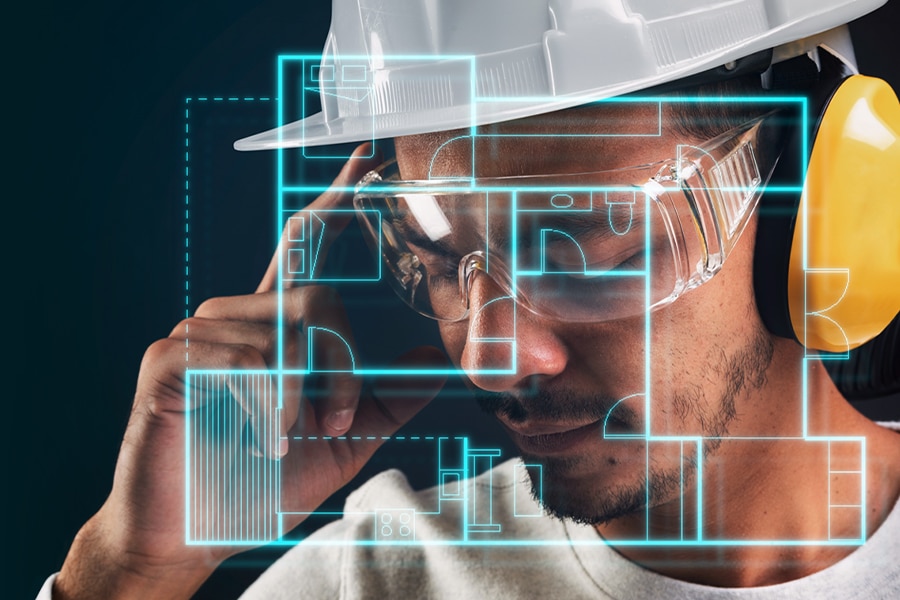California’s proposed statewide High Speed Rail (HSR) project is the stuff of infrastructure legend.
The idea of connecting the state via high-speed railway has been popular since the 1980s, but with the passage of Proposition 1A in 2008, California was able to finally begin planning and construction for what is poised to be the largest—and greenest—infrastructure project in the nation.
Proponents hope that a completed HSR system will revolutionize the state’s approach to transportation and pave the way for similar projects across the nation.
So what’s the current state of this ambitious, far-reaching project? Built spoke to Garth Fernandez, California HSR’s Central Valley regional director, to find out.
Why high-speed rail is critical to California’s future
Building a statewide HSR system is a massive undertaking, but according to Fernandez, it’s more than worth the trouble.
“California high-speed rail is the cornerstone of California’s green transportation plan and the first-in-the-nation high-speed rail system,” he said. “Our mission is to deliver an electrified high-speed rail system that will carry passengers between San Francisco and Los Angeles in under three hours at speeds of up to 220 mph.”
Fernandez believes that the HSR project will have a transformative effect on the way Californians travel. “High-speed rail will fundamentally transform how people move around the state,” he predicted. “Despite planned investments in airports and highways, California is facing a transportation capacity crisis. To keep pace, California must expand transportation capacity to improve mobility. Electric high-speed rail will serve as the backbone for a modern, integrated statewide passenger rail network that will connect California’s urban, suburban and rural communities with fast, frequent service.”
According to Fernandez, every completed segment of the HSR project marks a major increase in travel capacity, while helping to meet the state’s ambitious air quality and climate goals. “Adding the Phase 1 San Francisco to Los Angeles/Anaheim high-speed rail system to the state’s transportation network is equivalent to adding a new major airport and a six-lane highway between San Francisco and Los Angeles,” he said.
The next phase of HSR
What’s the current phase of this ambitious project? Fernandez said the authority is hard at work completing the first section of the railway.
“The authority will have its first completed construction package later this year,” he said. “Construction Package 4 is a 22-mile area bounded by one mile north of the Tulare/Kern County line at the end and Poplar Avenue in Kern County. Civil infrastructure of the project will be completed, which includes grade separations, viaducts and at-grade embankments.”
With 119 miles of rail currently under construction, Fernandez said “dozens” of critical structures have been completed, with dozens more well on their way.
“In the Central Valley, the high-speed rail project is being built fully grade separated, with many of the BNSF and Union Pacific Railroad at-grade crossings being eliminated,” he said. “Major structures currently underway include the Hanford Viaduct, Conejo Viaduct and the Tule River Viaduct. Later this year, we will mark another major milestone with completion of the southernmost section of initial construction.”
In addition to the railway itself, Fernandez said the stations the HSR team is currently working on throughout the Central Valley are equally critical to the economic revitalization and community growth the project aims to foster.
“We are designing stations that will serve not only as transportation hubs, but will help revitalize the communities around them,” Fernandez said. “Stations can reverse urban blight, revitalize downtown areas, inject artistic energy into station neighborhoods and create a sense of place that all community residents feel connected to. I am very excited for the positive impact our stations will bring to the Central Valley.”
The human impact of the HSR project
Phase 1 of the HSR system is currently under design construction, with more than 30 active construction sites operating across California’s Central Valley. Stretching across 171 from Merced to Bakersfield, Fernandez said this stage of the project has already been successful.
“In February, we celebrated 10,000 good-paying construction jobs created since the start of construction,” he said. “Most of these jobs have gone to Central Valley residents and workers from disadvantaged communities.”
Fernandez said he’s proud of how the HSR has brought economic opportunity to construction workers throughout California, especially within the Central Valley. Roughly 73% of the jobs the HSR project has created so far have gone to workers in the region, employing professionals from a multitude of specializations and trades.
“A project of this magnitude requires every construction trade you can think of including ironworkers, laborers, cement masons, journeymen and teamsters, just to name a few,” Fernandez said. “Since breaking ground in 2015, the authority has been helping put men and women to work by creating good-paying construction jobs that provide union wages and benefits,” he said. “Even in the midst of a national pandemic, the authority has been able to keep these workers on the construction site and employed while some were unable to go to work. As construction continues throughout the Central Valley, the number of jobs created continues to grow every day.”
One of the aspects of the project Fernandez is most proud of is the way that the HSR Authority has not only created jobs but has actively worked to initiate new workers into the trades.
“In April 2020, the authority established the Central Valley Training Center, a 12-week, pre-apprenticeship program that provides hands-on construction training for residents of the Central Valley looking to work on the nation’s first high-speed rail project,” Fernandez said. “Students are exposed to more than 10 different construction trades and receive more than a dozen certifications upon completion.” More than 100 students have graduated since the program launched, a number that will continue to grow.
What’s next for high-speed rail?
As the HSR project continues, Fernandez said he hopes that California’s commitment to modernizing its railway will serve as a model for the rest of the nation.
“We’re playing catch-up to the rest of the world,” he said. “Most every other peer economy in the world already has fledgling or robust high-speed rail systems. But soon California will be in that same role model position for the rest of the nation.”
Fernandez hopes the project will be the backbone of an interconnected mass transit system that takes a more integrated approach to moving passengers throughout the state, and eventually nation. “For this project to be as successful as it can be, it’s vitally important that we have robust local and regional transit systems connecting into this green, fast and reliable high-speed rail system,” he said. “And in doing so, finally giving Californians a clean and fast option for interregional travel we’ve never had before, and we all deserve.”












